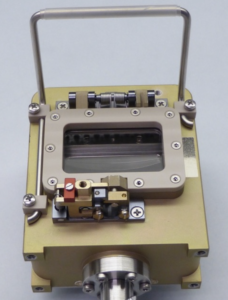Contamination

The SPRITE detector will be housed in a hermetic container with a door that will open once in space. This housing will be filled with a small amount of nitrogen when SPRITE is delivered to the launch provider that will protect the sensitive detector. Photo courtesy of Sensor Sciences Inc.
The far-ultraviolet bandpass is extremely sensitive to contamination from hydrocarbons, while both the mirror coatings and the detector photocathode degrade with exposure to humidity. This imposes onerous contamination control requirements on far-UV missions that can drive cost and risk. On a moderate size mission such as
FUSE was these procedures were challenging, but not impossible.
FUSE demonstrated nearly negligible degradation during integration and testing prior to launch (space is a relatively clean environment). These procedures are nearly impossible for a mega-mission like LUVOIR, however, which has an 8 to 16 meter primary mirror and instruments the size of school busses. It would be extremely difficult to maintain < 20% humidity on al of those optics for years leading up to launch.
As a tiny CubeSat, SPRITE has many of the same problems. While dry nitrogen purges and contamination covers are easy to implement on a small volume, SPRITE will be launched as a secondary payload. This means it has to be delivered to the launch provider as much as two months before launch, after which the project team can do nothing extra to protect the sensitive optics and detector. To deal with this risk, SPRITE relies on the protective overcoat of the
eLiF optics to protect the optics, a very clean deployer module, and a hermetically sealed detector housing with a door that will open once in space. This housing is produced by the detector partner, Sensor Sciences LLC., and has heritage from a number of NASA Planetary Science missions such as JUNO-UVS, but has never been used in such a small instrument as SPRITE. If the mirrors and detector can successfully be protected until SPRITE reaches orbit, then SPRITE will have successfully blazed a trail for future small far-UV instruments.